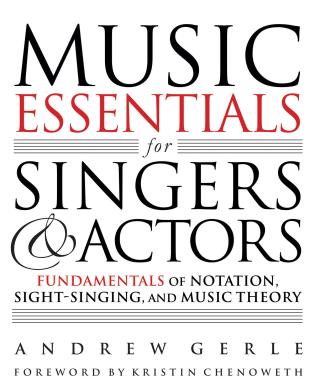
GPA's are not magical mathematical equations. GPA's represent your academic accomplishments in a simplified form. If you've been putting forth effort and seriousness in your studies, your GPA will show it. It's important to realize that a GPA doesn't necessarily mean you are a success. It is only an indicator of your hard work. These are some tips that will help you improve your GPA.
Weighted grade point average
When calculating a student’s weighted Grade Point Average, it will be taken into account how many college courses they have taken. This is done by adding all marks, even those from repeated courses, to the total and then dividing it by the number credits. A=2.5 point values will apply to advanced courses. A=1.5 points will apply to honors courses. A=2.50 and B=1.5 respectively for standard classes. The average will determine the rank of each student in the class.
Another issue that weighs grades is their use as a disincentive to students. The weighted-grade system encourages students take more challenging courses and removes any potential disincentive to receiving a lower mark for a difficult course. Weighted grades are also more balanced and acknowledge higher academic accomplishments. This is important to know, and it should be investigated by reporters and college counselors.

Unweighted grade point average
The most popular measure for college students is the unweighted grade-point average (GPA). There is a lot of advice available, but most of it doesn't apply unless you are taking extremely competitive classes. There are many options to increase your average, without sacrificing academic performance. These are the most commonly used methods. If you're not sure how to improve your GPA, try these strategies!
An Unweighted percentage grade is calculated from the grades you receive in each course. This means that you will use the highest grade if you take the course more than once. Each grade has its own point value. For advanced courses, the A grade is 2.5 and the B grade is half. The D grade is. The Unweighted GPA is also used to determine class rank.
Calculating a grade-point average
A grade point average is a calculation that measures a student’s academic achievement. It is the sum total of all grades earned in different courses throughout a semester. Students' grades may vary depending on where they were educated. This grade calculator will accept letter grades, and convert them to numbers. Grades will be between 0.0 and 4. High GPAs are considered to be an indicator of academic success.
A student may withdraw from a class if he or she is not satisfied with the grade. While "W" grades are recorded on student records, they do not count in the calculation of grade point average. Non-participation can result in a student losing their grade. It is imperative that the grade be updated as soon and as quickly as possible. During this time, an "IP" symbol will appear on the student's permanent record. When the class is completed, a substantive grade and a unit of credit will automatically be assigned. A student cannot graduate with an IP grade.

Calculating a cumulative grade-point average
You should be able to calculate your cumulative grade point mean (GPA) if you are a student. This measure will show you how well your college education went. The number of credits you have taken is necessary to determine your GPA. Multiply your semester GPA by twelve credits to calculate your GPA across all four semesters. Divide the sum by how many semesters.
Many institutions will have a list of equivalent numeric numbers for letter grades. You should consult this list to determine what your GPA will be based on. Once you have this information, the calculator can be used to calculate your GPA. Keep in mind that the calculator will give an estimate. It is not a legal tool. For information about how to use numeric equivalents to calculate your GPA, refer to the institution's documentation.
FAQ
How much does homeschooling cost?
There are no set costs for homeschooling. Some families charge between $0-$20 per lesson. Other families offer no-cost services.
However, homeschooling requires dedication and commitment. Parents must make time for their children.
Access to books, materials, and other learning aids is essential. Homeschoolers are often required to attend community events and participate in programs that complement their curriculum.
Parents should consider the cost of transportation, tutors, extracurricular activities, and other expenses.
Homeschoolers also need to plan for field trips, vacations and special occasions.
What are the requirements for my chosen field of work?
If you want to become a lawyer, you'll need good written communication skills. You must communicate well with patients if you wish to become a nurse. If you want to become an accountant, you'll need excellent math skills. These are just a few examples. Take a look at all the things that you love doing. What job is best for you? To become an engineer, you will need to be able to design structures and machine. Understanding basic math will be essential if you want to be successful. Business success requires a solid understanding of statistics and numbers. Communication skills are essential for teachers and other professions. You will need to be able teach and assist others.
Is it necessary to attend college in order to be an early childhood educator
It is not possible, however, to better prepare yourself for your future career in this field, it might be worth looking into college.
It is important to remember that it is not easy to become a teacher. Every year, many people are rejected. Many people also leave college after only one semester.
To be a teacher, you will need to have strict qualifications.
How much money does a teacher make in early childhood education? (earning potential)
Teachers in early childhood make an average of $45,000 annually.
However, there are areas where salaries tend to be higher than average. Teachers in large urban school districts are often paid more than teachers in rural schools.
Salaries also depend upon factors such as how big the district is and whether or no teacher holds a master's/doctoral degree.
Because they lack experience, teachers often make less than other college graduates. But their earnings can rise significantly over time.
Statistics
- Among STEM majors, that number is 83.5 percent. (bostonreview.net)
- These institutions can vary according to different contexts.[83] (en.wikipedia.org)
- Data from the Department of Education reveal that, among 2008 college graduates, 92.8 percent of humanities majors have voted at least once since finishing school. (bostonreview.net)
- In most developed countries, a high proportion of the population (up to 50%) now enters higher education at some time in their lives. (en.wikipedia.org)
- Globally, in 2008, around 89% of children aged six to twelve were enrolled in primary education, and this proportion was rising. (en.wikipedia.org)
External Links
How To
What is vocational Education?
Vocational education prepares students for the workforce after high school. Students are trained in specific skills to be able to do a particular job such as welding. It includes training on the job in apprenticeship programs. Vocational Education is different than general education. It focuses on specific careers and not learning broad knowledge for the future. Vocational education's goal is to help students find employment after they graduate.
Vocational education may be provided at all levels of schooling, including primary schools, secondary schools, colleges, universities, technical institutes, trade schools, community colleges, junior colleges, and four-year institutions. In addition, there are many specialized schools such as culinary arts schools, nursing schools, law schools, medical schools, dental schools, veterinary medicine schools, firefighting schools, police academies, military academies, and other military schools. Many of these provide both academic instruction and practical experience.
Over the last decade, several countries have made significant investment in vocational education. However, it is not clear if vocational education is effective. Some critics claim it is not effective in improving students' employability. Others argue that it helps them prepare for life after school.
The U.S. Bureau of Labor Statistics has estimated that 47% of American adults hold a postsecondary certificate or degree related to their current occupation. This percentage is higher among those with higher education. 71% percent of the 25-29 year olds with a bachelor's degree are currently working in fields that require postsecondary credentials.
The BLS reported that almost half the adult population of the country had at least one form of postsecondary credential as of 2012. About one-third of Americans held a two-year associate degree, while about 10 percent held a four-year bachelor's degree. One in five Americans has a master's or doctorate.
The median annual wage of a bachelor's degree holder was $50,900 in 2013, compared with $23,800 for someone without one. The median income for those with advanced degrees was $81,300.
For those who did not complete high school, the median wage was only $15,200. A person with a lower high school diploma earned $13,000 annually.